Are you or someone you know struggling with spine curvature disorders? Look no further! This article will introduce you to a natural remedy that has been proven effective in alleviating the symptoms of these conditions. Say goodbye to discomfort and hello to a healthier, happier spine with this incredible solution. So, sit back, relax, and let us guide you towards a pain-free life!
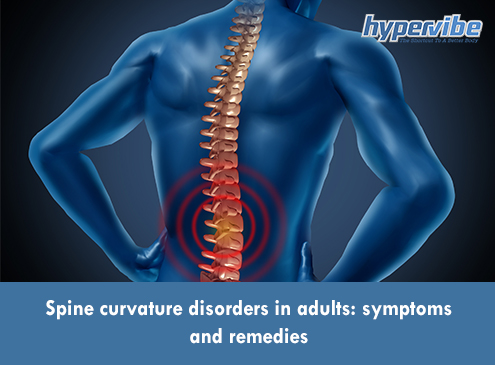
Understanding Spine Curvature Disorders
Spine curvature disorders, also known as spinal deformities, refer to abnormal curvatures of the spine that can affect people of all ages. The most common types of spine curvature disorders include scoliosis, kyphosis, and lordosis.
Definition and Types of Spine Curvature Disorders
Scoliosis is characterized by an abnormal sideways curvature of the spine, resembling an “S” or a “C” shape. Kyphosis, on the other hand, is a forward rounding of the upper back, leading to a hunched posture. Lordosis, also known as swayback, is an excessive inward curvature of the lower back. These conditions can range from mild to severe and may cause pain, discomfort, and posture abnormalities.
Causes and Symptoms of Spine Curvature Disorders
The exact causes of spine curvature disorders are not always clear. Some cases may be congenital, meaning they are present at birth, while others may develop as a result of poor posture, muscle imbalances, or underlying medical conditions. Common symptoms associated with spine curvature disorders include back pain, muscle weakness, stiffness, uneven shoulders or hips, and fatigue.
Diagnosis of Spine Curvature Disorders
If you suspect you have a spine curvature disorder, it is vital to seek medical evaluation from a healthcare professional. During the diagnostic process, your doctor will perform a physical examination, assess your medical history, and may order imaging tests such as X-rays or magnetic resonance imaging (MRI) to accurately diagnose the specific type and severity of your spine curvature disorder.
Non-surgical Approaches for Spine Curvature Disorders
While surgery may be necessary in severe cases, many individuals with spine curvature disorders can manage their condition through non-surgical approaches. These non-invasive treatments aim to improve core strength, alleviate pain, and promote better posture.
Physical Therapy and Exercise
Physical therapy plays a crucial role in the non-surgical management of spine curvature disorders. A trained physical therapist can design an individualized exercise program that focuses on strengthening the muscles surrounding the spine, improving flexibility, and promoting better alignment. These exercises may include stretches, core strengthening exercises, and postural correction techniques.
Yoga and Pilates
Yoga and Pilates are two forms of exercise that have gained popularity in managing spine curvature disorders. These practices emphasize proper alignment, balance, and flexibility. By engaging in specific yoga poses or Pilates exercises under the guidance of a qualified instructor, individuals can improve posture, increase core strength, and reduce pain associated with spine curvature disorders.
Chiropractic Care
Chiropractic care involves the use of spinal adjustments and other manual therapies to realign the spine and alleviate pain. Chiropractors use their hands or specialized tools to apply controlled force to specific joints, helping restore proper alignment and reduce discomfort caused by spine curvature issues. It is essential to consult with a licensed chiropractor to determine if this treatment approach is suitable for your specific condition.
Massage Therapy
Massage therapy can provide relief for individuals with spine curvature disorders by reducing muscle tension, improving blood flow, and promoting relaxation. A skilled massage therapist can target areas of tightness or discomfort, using various techniques such as Swedish massage, deep tissue massage, or myofascial release. Regular massage sessions may help alleviate pain associated with spine curvature disorders and improve overall well-being.
Acupuncture
Acupuncture is a traditional Chinese medicine practice that involves the insertion of thin needles into specific points on the body to stimulate energy flow and promote healing. This holistic therapy is believed to help reduce pain, improve circulation, and encourage overall balance within the body. While more research is needed to fully determine its effectiveness, acupuncture is known to be a safe and potentially beneficial treatment option for managing spine curvature disorders.
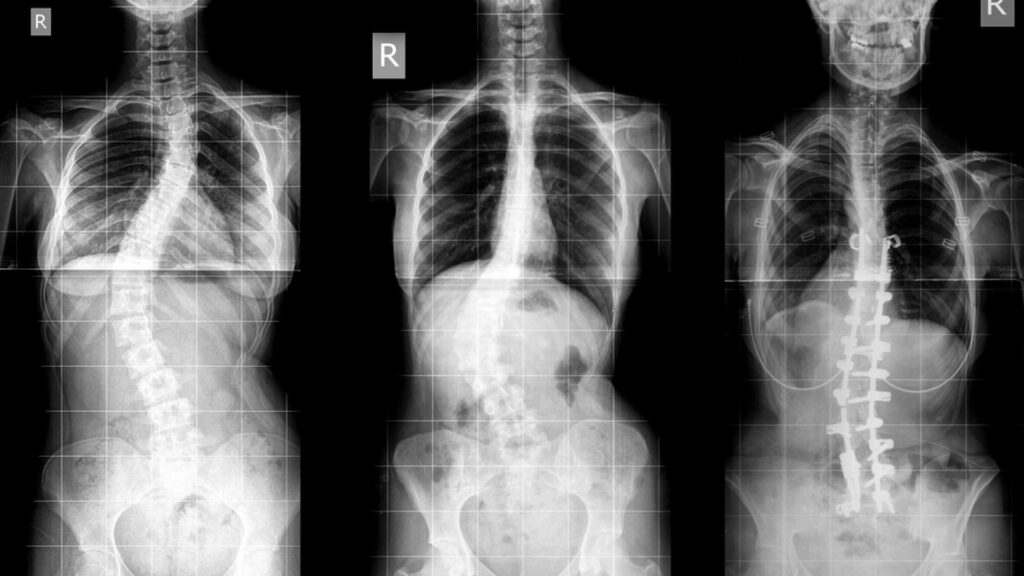
Herbal Remedies for Spine Curvature Disorders
Certain herbal remedies may offer potential relief for individuals with spine curvature disorders. While these remedies should not replace medical advice or treatments, they can be used in conjunction with other therapies to support overall health and well-being.
Turmeric
Turmeric, a vibrant yellow spice commonly used in cooking, contains a compound called curcumin. Curcumin has potent anti-inflammatory properties that can help reduce pain and inflammation associated with spine curvature disorders. It is available in supplement form or can be used as a spice in various recipes.
Ginger
Ginger is well-known for its anti-inflammatory properties and can provide relief from the pain and discomfort associated with spine curvature disorders. It can be consumed fresh, as a tea, or in supplement form. Ginger may also help with digestion and overall immune function.
Boswellia
Boswellia, also known as Indian frankincense, has been used in traditional medicine to reduce inflammation and alleviate pain. It contains compounds that can inhibit inflammatory enzymes, making it a potentially helpful herbal remedy for individuals with spine curvature disorders.
Devil’s Claw
Devil’s Claw is an herb native to Southern Africa and has been traditionally used to reduce pain and inflammation. It can be taken in supplement form, and its anti-inflammatory properties may help manage symptoms associated with spine curvature disorders.
White Willow Bark
White Willow Bark contains salicin, a compound similar to aspirin, which can help reduce pain and inflammation. It has been used for centuries as a natural remedy for various conditions and may provide relief for individuals with spine curvature disorders.
Diet and Nutrition for Spine Curvature Disorders
Maintaining a healthy diet can support overall spine health and potentially alleviate symptoms associated with spine curvature disorders. Certain foods and nutrients can reduce inflammation, support bone health, and promote optimal spinal function.
Anti-inflammatory Foods
Incorporating anti-inflammatory foods into your diet can help reduce inflammation, which is often a key factor in spine curvature disorders. Some examples of anti-inflammatory foods include fatty fish (e.g., salmon, mackerel), leafy greens, berries, nuts, and seeds.
Essential Vitamins and Minerals
Consuming ample amounts of essential vitamins and minerals is crucial for spine health. Vitamin C, for example, supports collagen production, which is important for maintaining the integrity of ligaments and tendons surrounding the spine. Vitamin D and calcium promote strong bones and help prevent osteoporosis, a condition that can exacerbate spine curvature disorders.
Omega-3 Fatty Acids
Omega-3 fatty acids, found in fish oil and certain plant-based sources like flaxseed and chia seeds, have anti-inflammatory properties. Including these healthy fats in your diet may help reduce inflammation associated with spine curvature disorders.
Calcium and Vitamin D
Calcium and vitamin D work hand in hand to support bone health. Adequate intake of both nutrients can help maintain strong bones, which are essential for optimal spinal alignment and function. Dairy products, leafy greens, fortified plant-based milk, and exposure to sunlight are excellent sources of calcium and vitamin D.
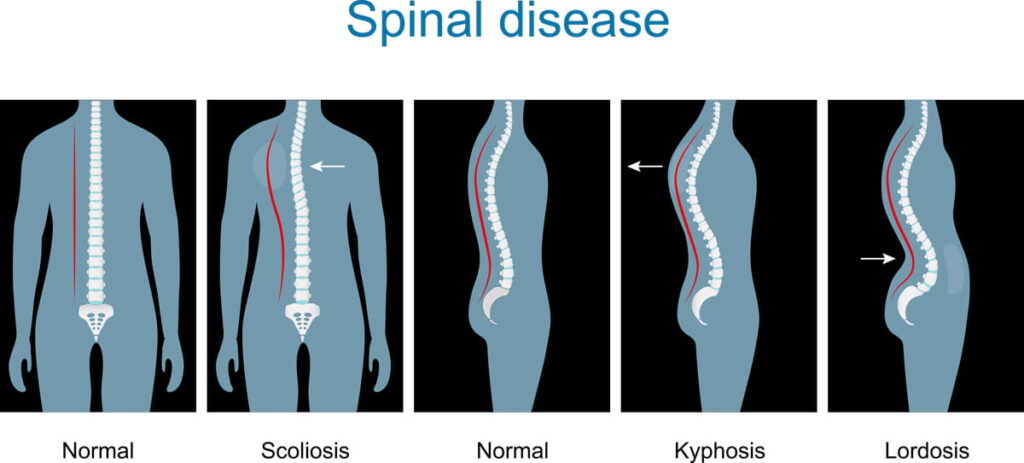
Supplements for Spine Curvature Disorders
In addition to a healthy diet, certain supplements can provide beneficial support to individuals with spine curvature disorders. It is essential to consult with a healthcare professional before starting any new supplement regimen.
Glucosamine and Chondroitin Sulfate
Glucosamine and chondroitin sulfate are commonly used supplements for joint health. They may promote the repair and maintenance of cartilage, which can help reduce pain associated with spine curvature disorders.
MSM (Methylsulfonylmethane)
MSM is a naturally occurring sulfur compound that has anti-inflammatory properties. It is often used to alleviate joint pain and stiffness associated with spine curvature disorders.
Fish Oil
Fish oil supplements contain omega-3 fatty acids, which can help reduce inflammation and alleviate pain. They may provide additional support in managing spine curvature disorders when incorporated into a comprehensive treatment plan.
Turmeric Curcumin
Turmeric curcumin supplements, derived from the turmeric root, offer a concentrated dose of curcuminoids. These compounds possess potent anti-inflammatory properties and can help reduce pain and inflammation associated with spine curvature disorders.
Essential Oils for Spine Curvature Disorders
Essential oils can be a complementary therapy for individuals with spine curvature disorders. When used properly, these oils can provide relaxation, pain relief, and overall well-being.
Lavender Oil
Lavender oil is well-known for its calming properties. It can help reduce stress and promote relaxation, which may be beneficial for individuals experiencing muscle tension or pain caused by spine curvature disorders. Lavender oil can be diffused, applied topically, or added to a warm bath.
Peppermint Oil
Peppermint oil has analgesic properties and can provide a cooling sensation when applied topically. It may help alleviate muscle aches and pains associated with spine curvature disorders. For topical use, dilute peppermint oil with a carrier oil before applying it to the affected area.
Eucalyptus Oil
Eucalyptus oil has a refreshing aroma and contains compounds that have analgesic and anti-inflammatory properties. It can be used in a diffuser, diluted and applied topically, or added to a warm bath to provide relief from pain and discomfort caused by spine curvature disorders.
Wintergreen Oil
Wintergreen oil contains methyl salicylate, a compound known for its pain-relieving properties. When applied topically, it can help reduce inflammation and relieve muscle or joint pain associated with spine curvature disorders. It is important to follow proper dilution guidelines and avoid ingestion.
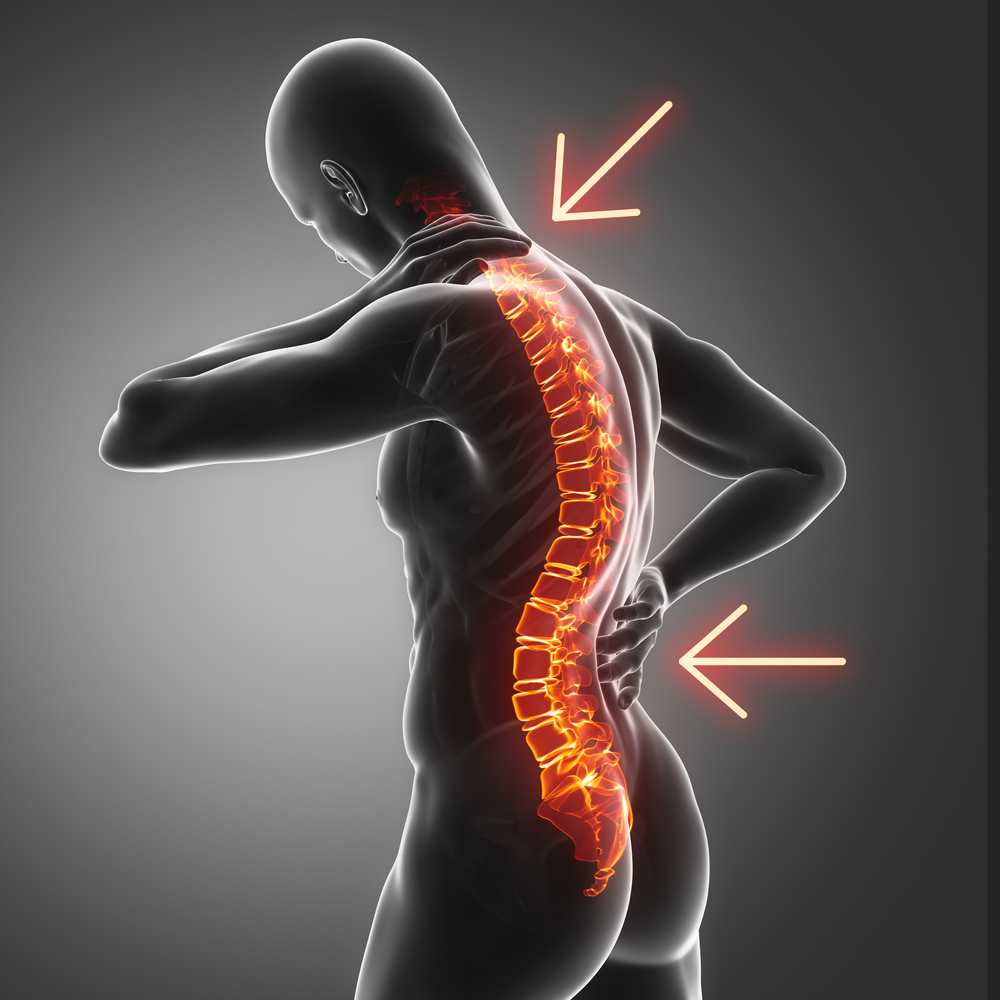
Hydrotherapy for Spine Curvature Disorders
Hydrotherapy, or water therapy, can be an effective non-surgical approach for managing spine curvature disorders. Water provides buoyancy, reducing the pressure on the spine and allowing for gentle movement and exercise.
Hot and Cold Therapy
Alternating between hot and cold water treatments can help relieve pain and reduce inflammation associated with spine curvature disorders. Apply a warm compress or take a warm bath to promote relaxation and improve blood flow. Alternatively, use a cold pack or take a cool shower to reduce swelling and numb the affected area.
Swimming and Water Exercises
Swimming and water exercises can be beneficial for individuals with spine curvature disorders. The buoyancy of the water supports the body, allowing for low-impact movement and exercise. These activities can help strengthen the muscles surrounding the spine, improve flexibility, and promote better posture.
Posture and Lifestyle Changes
Proper posture and lifestyle changes can have a significant impact on managing spine curvature disorders. Making conscious adjustments to your every day habits can help relieve pain, prevent further spinal deformities, and improve overall functionality.
Ergonomic Furniture and Accessories
Investing in ergonomic furniture and accessories can support proper spinal alignment during daily activities. A supportive chair, a comfortable mattress, and an ergonomic desk setup can help alleviate strain on the spine and promote good posture.
Proper Standing and Sitting Posture
Maintaining proper standing and sitting posture is crucial for spine health. When standing, distribute your weight evenly on both feet, keep your shoulders relaxed, and draw in your abdominal muscles. While sitting, ensure that your feet are flat on the ground, your back is supported, and your shoulders are aligned with your ears.
Regular Breaks and Stretching
Prolonged periods of sitting or standing can put excessive strain on the spine. Take regular breaks to stretch and move around. Gentle stretching exercises targeting the back, neck, and hips can help relieve muscle tension and promote flexibility.
Avoiding Heavy Lifting
Excessive strain on the spine due to heavy lifting can worsen spine curvature disorders. When lifting objects, use proper lifting techniques, such as bending at the knees and using your leg muscles to lift rather than your back. If possible, ask for assistance or use lifting aids to reduce the load on your spine.
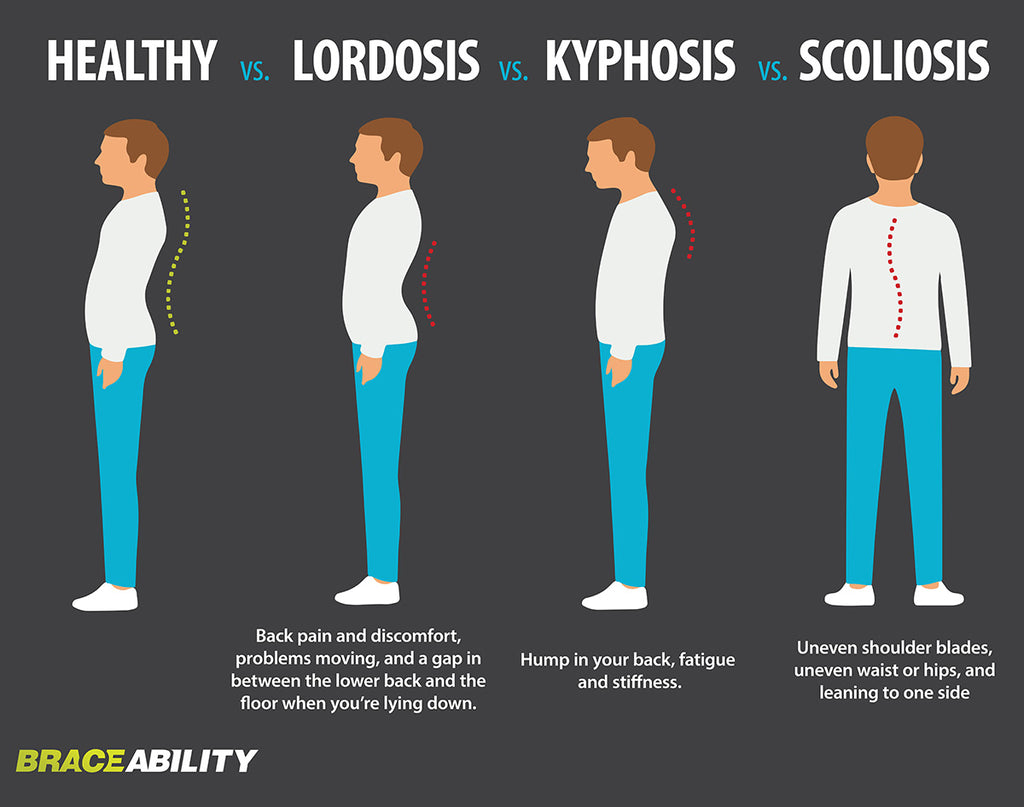
Stress Management for Spine Curvature Disorders
Stress can exacerbate pain and discomfort associated with spine curvature disorders. Implementing stress management techniques can help reduce muscle tension and promote overall well-being.
Relaxation Techniques
Practicing relaxation techniques such as deep breathing exercises, progressive muscle relaxation, or guided imagery can help reduce stress levels and alleviate muscle tension. Find a relaxation technique that works best for you and incorporate it into your daily routine.
Meditation
Meditation is a mindfulness practice that can help reduce stress, improve mental clarity, and promote relaxation. By focusing on your breath or a specific mantra, you can calm the mind and alleviate stress that may worsen symptoms of spine curvature disorders.
Deep Breathing Exercises
Deep breathing exercises have a calming effect on the body and can help reduce tension in the muscles surrounding the spine. Practice diaphragmatic breathing, where you breathe deeply into your abdomen, to promote relaxation and reduce stress-related symptoms.
Counseling and Therapy
Seeking counseling or therapy can be beneficial for individuals experiencing emotional distress or struggling to cope with the challenges of managing spine curvature disorders. A mental health professional can provide guidance, support, and techniques to help manage stress and improve overall well-being.
Alternative Therapies for Spine Curvature Disorders
Various alternative therapies can complement traditional treatments and help individuals with spine curvature disorders manage their condition effectively.
Ayurveda
Ayurveda, an ancient Indian system of medicine, offers a holistic approach to health and well-being. Ayurvedic treatments may include herbal remedies, dietary modifications, specialized therapies, and lifestyle recommendations tailored to the specific needs of individuals with spine curvature disorders.
Homeopathy
Homeopathy is a natural system of medicine that uses highly diluted substances to stimulate the body’s healing response. Homeopathic remedies are selected based on the individual’s symptoms and can address pain, inflammation, and other discomforts associated with spine curvature disorders.
Traditional Chinese Medicine
Traditional Chinese Medicine (TCM) incorporates various modalities, including acupuncture, herbal medicine, and therapeutic exercises like qigong and tai chi, to restore balance and improve overall health. TCM can be a valuable additional therapy in managing spine curvature disorders.
Energy Healing
Energy healing modalities such as Reiki or Healing Touch focus on promoting balance and restoring energy flow within the body. These therapies can help reduce stress, improve overall well-being, and provide relief from pain or discomfort associated with spine curvature disorders.
In conclusion, managing spine curvature disorders requires a comprehensive approach that combines non-surgical treatments, lifestyle changes, and alternative therapies. It is crucial to consult with healthcare professionals and experts in the respective fields to determine the most suitable course of action for your specific condition. By implementing these natural remedies and techniques, individuals with spine curvature disorders can find relief, improve posture, and enhance their overall quality of life.
Related Terms About Natural Remedy For Spine Curvature Disorders.
Cervical Spine Curvature Disorders, Curve Spine Problem, Definition Of Spine Curvature Disorders, Diagnosis Of Spine Curvature Disorders, Different Kinds Of Spine Curvature Disorders, Disorders Of Spine Curvature, How To Fix Spine Curvature Disorders, How To Prevent Spine Curvature Disorders, List Of Spine Curvature Disorders, Most Common Spine Curvature Disorders